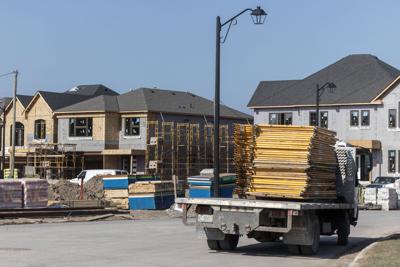What will it take to fix the “cost to build” challenge that is stalling construction and slowing housing starts in the Greater ÎÚŃ»´«Ă˝ Area and restore affordability to Canada’s biggest market for new homeowners?
Most of the time, my response focuses on government fees, taxes and charges, and approval delays. But the reality is, beyond these major hurdles lies a long list of smaller, often-overlooked challenges that, when combined, have become a big drag on housing development in this region.
Put simply, there is a laundry list of requirements, conditions and standards that get added on to the building of new homes by various governments and quasi-regulatory bodies, which individually all serve some purpose or other.
But in aggregate, they become an unmanageable web of red tape, inflated costs and consumed time, slowing development, adding significant costs — and pushing desperately needed homes further out of reach.
Making matters worse is many of the goalposts are constantly moving. Standards, requirements and processes are not only extensive — they are evolving, often mid-project. That means a developer can start with one set of rules and end up adjusting their plans multiple times over the course of a single build, especially for projects that take a decade or more to complete. That is not a recipe for efficiency, affordability or stability.
If we want to make real progress and bring Prime Minister Mark Carney’s “Build, Baby, Build” mantra to life, we must a) freeze the evolution of new standards for a defined period so the industry can operate with some degree of certainty and b) undertake thorough reviews of all development-related requirements to distinguish between what’s essential and what’s simply “nice to have.”
Take the explosion of required studies, technical reports and checklists municipalities now demand before they will even begin to review a development application.
These requirements can range from environmental assessments to wind studies, shade impact reports, hydrology assessments and noise analysis — most of which must be completed by specialized licensed professionals.
They are time-consuming as they take months to complete, and expensive, as they add tens of thousands to hundreds of thousands of dollars to the process. A recent study undertaken by our association and conducted by Altus Group Economic Consulting found that, depending on the GTA municipality, a single development application might require anywhere from 37 to 120 different reports and studies. Back in the mid-2010s, we thought 50 was high. Today’s numbers are staggering.
This is not to say all of these requirements are without value. But a critical eye is needed and recently passed provincial legislation will help.
But do we really need all of them for every application? Or can some be streamlined, consolidated or even removed without compromising community interests? If a neighbouring project completes the full slate of requirements, does the municipality really need the same suite for another if the conditions have not materially changed?
Another growing issue has been the proliferation of municipal green building standards layered on top of existing building codes. Again, a very commendable and laudable goal of enhancing environmental performance of new buildings and improving resiliency.
However, the federal and provincial governments already mandate improved energy performance through the National and Ontario Building Codes, which are updated regularly and should form the basis for building.
ÎÚŃ»´«Ă˝s built today are significantly more efficient than those from 15 or 20 years ago. But individual municipalities have been imposing their own environmental performance standards — each with slightly different specifications and timelines.
For homebuilders, this is an administrative nightmare. Try building the same home in different municipalities when each has its own set of rules layered on top of the building code, and might change mid-project.
Thankfully, the Ontario government recently passed Bill 17, reasserting the primacy of the province’s building code and requiring municipalities to halt their patchwork of local green standards — a smart step toward consistency and predictability.
Finally, let me raise an issue that developers in ÎÚŃ»´«Ă˝ constantly point to: “bathtubbing” new highrises. “Bathtubbing” is the layman term for waterproofing foundations to prevent water that could seep into the underground parking garage or foundation from having to be discharged into the storm water or sanitary sewer.
Why is it required? Because the city’s stormwater and sanitary sewer systems lack capacity.
Instead of fixing the core infrastructure — despite projects paying millions in development charges to offset infrastructure costs, including sanitary and wastewater systems — the city shifts the burden to new builds, layering on even more cost and complexity. This kind of workaround is not a sustainable solution, especially in a housing crunch.
What we need is a mindset shift, one that values stability over novelty, clarity over complexity, and outcomes over optics. Before any new requirement is introduced or current regulations changed or updated, we must ask: Will this make housing more expensive or more affordable? If the answer is the former, a serious conversation is needed about whether the benefit justifies the additional burden.
Housing affordability in the GTA is not a mystery. It is a policy and process problem, which is why it’s possible to build new homes more affordably in other parts of the country that are not burdened with the same requirements. We have the power to fix it and address the affordability challenges facing new homeowners for the long term.



























To join the conversation set a first and last name in your user profile.
Sign in or register for free to join the Conversation